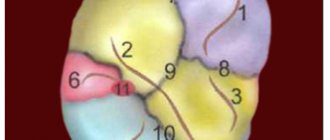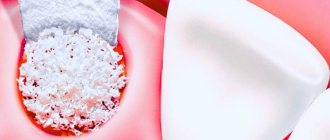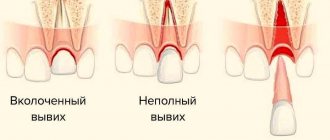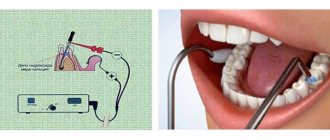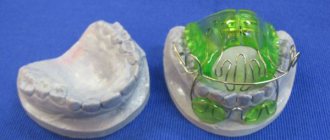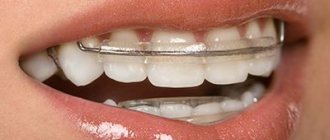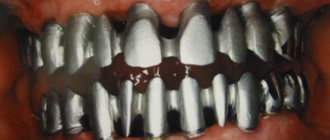Recently, the installation of dental pins has become increasingly popular in dentistry. The technology in most cases helps to save the tooth. When removing a dental nerve, the doctor must clean the canals. After depulpation, the dentist installs a dental pin. What is it, what types are distinguished, indications for installation, as well as the pros and cons of the procedure.
Dental pins - types, manufacturing materials, installation options: review material
Article navigation
- What is a pin
- Indications
- Contraindications
- Advantages and disadvantages
- Classification
- - metal
- - anchor
- - gutta-percha
- - fiberglass
- - carbon fiber
- - ceramic
- Installation steps
- Complications and features of rehabilitation
- Alternatives
- Price
Question for a specialist
Many people face severe tooth decay due to caries, pulpitis or trauma.
And installing a filling alone is not always a good solution, since such a restoration can quickly fail. To make the tooth more durable, a special structure is installed in it - a pin, which can be closed on top with a filling or crown. Today we will tell you all about what pins are in dentistry and why they are placed, what they look like and what they are, who is suitable and who is not suitable. We will also dwell on the features of fixation and prices.
Purpose
Pin connections are widely used in mechanical engineering, medicine, instrument making and other industries. It is used in the automotive industry and in the manufacture of household appliances, wherever fixed detachable joints are made.
The use of pins simplifies the fixation of parts during repair and processing.
Conical clamps are used to secure elements of body parts during their joint processing. For example, the gear housing is first processed along the parting plane. Then they drill along the flanges, install pins and bore holes for shafts and bearings with H7 accuracy.
After any number of disassemblies, all treated surfaces are precisely aligned.
What is a pin
What is a dental pin for teeth and why is it placed? A pin is an artificial element that is placed in a damaged tooth and allows it to be strengthened before subsequent prosthetics or before splinting a group of teeth. A dental post1 looks like a small nail, rod, or toothpick and can be hard or flexible. It can also be threaded. What are such structures made of? Nowadays dentists have a very large selection of materials – metals and alloys, ceramics, gutta-percha and others, we will tell you in more detail below.
Interestingly, restoration with a pin lies on the border of therapeutic dentistry (conservative treatment) and orthopedic dentistry (prosthetics). That is, if installation is necessary, you can contact both a dentist and an orthopedist.
Complex on 4 OSSTEM implants with delayed loading - 150,000 rubles.
Complex implantation Osstem (South Korea) with delayed loading after 4-6 months.
Doctor's work guarantee - up to 5 years (under an agreement on the provision of medical services) Call now or order a call
Opening hours: 24 hours a day - seven days a week
When to use dental pins
In dentistry, there are 5 main areas of application of pins:
- Extension on the pin of the crown part of the tooth. The most common approach.
- Prosthetics with specialized structures. It is used when it is not possible to attach the prosthesis to adjacent teeth.
- Reinforcement of a tooth after depulpation using a pin insert.
- In the treatment of periodontal diseases using a combined device designed for splinting.
- During a surgical intervention aimed at reimplanting the patient’s teeth, in which specialized structures are successfully used.
Most cases of using pins relate to building up the crown of a tooth.
Indications for installation
To understand why a pin is inserted into a tooth, you need to have an idea of the indications for its installation. Let's consider them further:
- destruction of part of the crown: massive chipping, carious lesion, erased enamel,
- destruction of the crown by half or more,
- thin walls of the crown with a large cavity inside (up to the root canals),
- the need for strengthening for subsequent prosthetics: before installing a filling, artificial crown, bridge,
In which teeth are pins placed? These designs are suitable for absolutely all permanent teeth (not for baby teeth), incisors, canines, premolars and molars. True, third molars or “eights”, due to the curvature of the root canals, are often removed when destroyed, because it is not possible to make a high-quality restoration here.
“I once lost my bottom five very badly. In general, it was patched up with fillings for many years, and caries often appeared. And then we had to drill almost to the root. I thought that everything would have to be deleted. But the dentist decided that he could insert a pin, build a filling on it, and close it with a crown on top. It turned out very well in appearance.”
Elena_89, review from gidpozubam.ru
Benefits and indications
The main advantage of the procedure is that the pinned tooth does not stand out from the rest and looks organic. A correctly selected design does not violate aesthetics, preserving the beauty of your smile.
Advantages:
- Chewing abilities return.
- Restores a damaged crown.
- Increases the self-esteem of a patient who had complexes regarding the aesthetic part.
When deciding whether to install a structure, the doctor evaluates several parameters. The main indications for which the use of a pin is permitted:
- The crown part of the tooth is destroyed by more than 50%.
- Complete destruction of the crown part of the tooth while preserving its root.
- Creation of a kind of stump for subsequent dental prosthetics.
Contraindications for installation
Installation of the structure is contraindicated in the following situations:
- pulpitis of various origins: first you need to undergo treatment,
- inflammation of the gums: also needs to be cured before installation,
- the presence of vertical and “oblique” cracks in the roots,
- pathologies under the roots: periodontitis (inflammation of the ligamentous apparatus), cysts and granulomas - again, these should first be cured,
- roots are too short
- thin-walled roots: their wall thickness is less than 2 mm,
- if the walls of the crown are broken at or below the level of the gum: in general, the minimum height of the remaining walls above the gum should be at least 2 mm,
- severely curved root canals,
- allergic reaction to the construction material (extremely rare),
- blood diseases,
- serious mental disorders: the patient may unknowingly harm himself during treatment.
Removal of a dental implant takes place in several stages.
The structure itself is removed under local anesthesia. First, the crown of the tooth is removed, then the implant is removed from the patient’s jaw. After surgery, the dentist’s task is to eliminate the cause that caused the violation of osseointegration of the implant by carrying out appropriate treatment. During this period, the patient should strictly follow the treatment procedures prescribed by the doctor, while taking proper care of the oral cavity. Correct removal of the old implant directly affects the further treatment plan and options for re-implantation.
Classification of dental pins
What types of dental pins are there? In fact, there are many types of classification of such structures - depending on the location and features of installation, the type of material and its characteristics, shape and size according to ISO standards - from 10 to 140. Let's consider the classification further, and in the following sections we will dwell in detail on the most popular types designs.
Classification according to installation location:
- intracanal (the vast majority of structures): placed with the sharp part in the root canal or in all canals (if the tooth is multi-channel), and the upper one is located in the coronal part. Next, the restoration is filled and/or closed with an artificial crown,
- parapulpal (pins): suitable for installation only in the crown, without affecting the canals. In this case, the dental nerve, i.e. the pulp remains healthy and undamaged. Parapulpal pins, as a rule, are installed in the dentin layer along the edges of the natural crown and are slightly bent at the top and center of the tooth so that a filling can be built up on top. Parapulpal ones are made of metal (titanium, steel, gold) and can be active or passive.
By structural features:
- cone-shaped (rounded needle-shaped),
- cylindrical (rounded straight),
- flat,
- combined,
- anchor
By type of fixation:
- active: fastened by screwing - due to the features of the shape and thread. The apparent ease of installation is associated with the risk of complications and injuries to the root canals,
- passive: attached using adhesive (cement, composite or special glue).
According to the material:
- metal,
- carbon fiber,
- fiberglass,
- ceramic,
- gutta-percha,
- paper: this option is used only as an auxiliary one - for drying the cavity during installation.
The materials must be strong and elastic in order to withstand chewing pressure, but not injure their own tissues (in particular dentin). Also, the materials should not provoke allergies, but it is worth noting that some patients sometimes experience allergic reactions.
By elasticity:
- inelastic: metal, ceramic models,
- elastic: carbon, fiberglass varieties.
By manufacturing method:
- standard: manufactured at the factory,
- customized: made in the clinic for a specific patient. As a rule, stump inlays are already implied here.
Zirconium dioxide crown on an implant for the whole 70,000 rubles.
OSSTEM implant (South Korea), individual zirconium abutment, gum former, impression taking.
Creation of a Prettau zirconium crown using 3D modeling technology. Consultation with 2 doctors: an orthopedist and an implantologist for free! Call now or request a call
Opening hours: 24 hours a day - seven days a week
Metal - composition and features
Metal is what the most popular non-elastic pins are made of. The metal alloy may include brass, stainless steel (inexpensive designs), as well as titanium, silver and gold. The advantages are ease of manufacture, high metal strength, low susceptibility to corrosion (for high-quality alloys). Disadvantages are the risk of damage to the roots under increased loads, and the material showing through the filling. Therefore, they are not used for restoration in the smile area under a filling - only under an artificial crown.
Silver is now practically not used, because... Over time it begins to corrode. And the products of this process stain the tooth gray.
Anchor - structure and purpose
Anchor pins for teeth are a subgroup of structures with a special shape. They can be made of medical steel, titanium, gold, brass, polymers, and can be gold plated. As a rule, metal is used most often. Anchor ones have a fairly large diameter and are somewhat similar to screws - i.e. cylinders with or without threads, which have a thickened head on top. This gives them the advantage of increased strength and stability of the restoration. The disadvantages of metal anchors include the risk of allergies, poor load distribution, which can cause injury to the root. But it is impossible to remove the anchor from the root.
Gutta-percha structures and their features
Gutta-percha is a flexible and elastic latex product that is used to produce round and flat conical dental posts. Although there is not so much gutta-percha itself in the composition - only about 20%. The rest is zinc oxide (up to 70%) and another 10% comes from additives - barium sulfate, wax, dye. Such designs are opaque, usually orange in color. Up to 30 gutta-percha pins can be inserted into one tooth, after which their tops are trimmed. There is gutta-percha for the “cold” method of installation, and there is “thermophilic”, which is heated with a special apparatus, due to which it softens and fills the smallest pores in the canals.
The advantages of gutta-percha include dense filling of the root canal and easy removal from it if necessary, low toxicity and good compatibility with the body. The disadvantages of the products are excessive softness and flexibility, which can cause problems during installation (if not handled correctly). The material may shrink over time, and it also does not have a bactericidal effect. When installing, you must use a sealer (special glue), otherwise the gutta-percha simply will not stick to the walls and will fall out.
Fiberglass - material and characteristics
Fiberglass passive pins for teeth are presented in the form of a thin translucent white rod. How are they made? These advanced third-generation elastic structures are made by weaving very fine glass strands or quartz glass strands and immersing them in an epoxy matrix. Popular manufacturers are RelyX Fiber Post from 3M ESPE, Easy Post from Dentsply Maillefer, fiberglass from the domestic manufacturer IKADENT.
The advantages lie in high aesthetics, because the rod does not show through the filling at all. The material is quite strong, elastic, and it does not provoke allergies and does not injure the root canals under stress. The disadvantages of fiberglass include high cost and lower strength compared to metal. Another disadvantage is the risk of structural fracture due to errors during installation.
Carbon fiber (or carbon, carbon, carbon fiber, C-post)
Carbon fibers are made on a carbon basis and have characteristics close to fiberglass, except for the color - here it is black. The rod consists of a multi-axial bundle of interwoven carbon fibers bound together with a composite compound. Such structures are elastic, resilient, do not injure the root canal tissues and distribute the chewing load well, i.e. reduce the likelihood of cracks and fractures.
Carbon fiber structures are suitable for passive fixation. They are not visible in ultraviolet light, but are clearly visible on an x-ray, which allows you to evaluate the quality of the installation. Disadvantage: It is not recommended to place a filling on the front teeth. A popular brand (and the only one in our country) is Carbonite from Nordin.
Zirconium Dioxide Ceramic Products
Zirconium dioxide or metal-free ceramics is a very durable material from which dental crowns, core and restorative inlays, and even implants are made. In addition to excellent strength properties, this material has high aesthetics - white color, which makes it suitable for restoration of any area of the dentition. Another advantage is hypoallergenicity. The only disadvantage is the high cost of the material. Such structures are manufactured by Nordin under the Zirix brand.
Service life and design reliability
The service life of a crown on a tooth on a pin is quite decent if the treatment was carried out efficiently, and the patient avoided injury and followed the doctor’s recommendations. Even a classic metal-ceramic crown with a simple anchor pin costs on average 7–8 years. A more expensive ceramic crown on a fiberglass post will last even longer.
If during use the crown begins to wobble, then this is a bad sign, regardless of whether it is with a pin or without a pin. In this case, you need to consult a doctor as soon as possible. If the crown and pin fall out completely, this may be due to improper treatment, pathological processes in the root canals, or a banal injury. Repeated treatment in most cases is no longer possible.
Make an appointment
right now!
Kuryatnikov Mikhail Gennadievich
Surgeon, Orthopedist, Implantologist
Stages of installation of the structure
Before placing a pin in a tooth, you need to prepare the canals and eliminate contraindications. If you plan to install an intracanal pin, then you need to completely remove the nerve and affected tissue, and cure the inflammation under the roots. And then carry out obturation - closing the canals with special filling compounds. Before installing the parapulp structure, the areas of enamel and dentin affected by caries should be carefully drilled out. In any case, preparation is accompanied by x-ray control - this is how the condition of the pulp and ligamentous apparatus is assessed, cysts and granulomas are identified, and the quality of obturation is determined.
After the preparatory stage, you can begin to install the structure. How is a pin screwed into a tooth and does it hurt? There shouldn't be any pain, because... treatment is carried out with an injection of anesthetic. Or on a previously pulpless root without an injection, because the tooth is already “dead”, i.e. there is no nerve in it that would respond to stimuli. The pin is inserted after part of the filling compound is removed from the top of the canal - approximately 2/3 is removed, and the lower third remains hermetically sealed. Here, special reamers are used that give the channel a conical or cylindrical shape.
Why are anchor pins needed in dentistry?
If a tooth is more than 30% damaged, it can be filled. But such a filling will not last long - exactly until the first serious test, for example, eating hard food.
Imagine that you are biting into a hard apple or a cracker, and at this time you can hear your tooth crunching. It's an unpleasant situation, isn't it? To prevent this from happening, pins are used.
The rod retainer ensures uniform distribution of chewing loads on hard dental tissues. It restores the functionality of a weak, dilapidated tooth and allows you to eat fully, including roughage in the menu.
Clinical case No. 1: tooth destroyed by 30-50%
The best option is to build up the crown with a photopolymer composite. The doctor drills out the carious tissue, removes the pulp (dental nerve), and then cleans the canals and treats them with an antiseptic. A pin is fixed into the dental canal, and a crown is formed around it by layer-by-layer application of the composite. Each layer is illuminated with a halogen lamp.
Clinical case No. 2: tooth destroyed by 50-90%
A rod with a supporting element (shoulder) for the crown is used. First, the doctor fixes the pin and then takes impressions of the patient’s teeth. Based on them, an individual crown is made in a dental laboratory. In about a week, your prosthesis will be ready, the doctor will fix it with cement-glue.
Complications and features of rehabilitation
If the dentist carried out the installation with violations of the technology, or the patient developed an allergic reaction, or the rod simply broke due to its thinness, then it is necessary to remove it. But this is not always possible due to the characteristics of the material of the structure and the depth of its immersion in the channel. How is a tooth with a pin removed? Here everything goes as standard - an anesthetic injection is given, the tooth is “swinged” with forceps and removed from the socket. But this does not apply to all structures - but only, for example, to anchor ones. You can try to remove the elastic ones with forceps or tweezers after chemically softening the adhesive composition.
How should I care for a restored tooth with a post inside?
First of all, any tooth, be it artificial or your “native” one, needs high-quality hygiene. Proper regular brushing, dental floss, and irrigator are your daily helpers in maintaining the beauty of your smile.
In some cases, after installing the pin, the patient may experience pain. The first thing to do in this case is to go to the clinic for an x-ray to make sure that the pin was not inserted too deep and did not touch the bone tissue.
If everything is fine with this, most likely the pain is due to the fact that the gum tissue was affected during dental prosthetics , causing it to become inflamed and react to touch. The aching pain usually goes away after a few days, but this does not mean that you should endure it, even if it does not pose any danger to your health. Ask your doctor to prescribe a pain reliever or rinse that can relieve discomfort.
- Promotion
Dental treatment under anesthesia
Promotion for sedation in Moscow!
If you experience: — Severe stress during dental treatment — Fear of the sound of dental instruments — Time-limited visits to the dentist
old price
12 000 ₽
price
5 900 ₽
Free consultation RUB 5,900 for 30 minutes
Limited offer. Sign up for a free consultation. There are contraindications, consultation with a specialist is required.
- Promotion
Teeth whitening ZOOM
Promotion for teeth whitening in Moscow!
As a gift: - Prof. Oral hygiene – Whitening care set with individual trays
old price
40 000 ₽
price
19 900 ₽
Free consultation Sign up for a free consultation. There are contraindications, consultation with a specialist is required.
Alternative strengthening options
An adequate alternative to parapulp rods can be restorative inlays (for extensive damage to the crown) or veneers (for minor damage to the front teeth). A filling, in principle, can also be considered as an option - but its service life is shorter, it will quickly sag or chip.
BEST REMOVABLE DENTURE - 20,000 rub.
All manipulations for the manufacture, installation and fitting of the prosthesis, including impressions, are included.
Save RUB 10,000! >> Call now or request a call
Opening hours: 24 hours a day - seven days a week
Stump inlays are an optimal replacement for in-canal structures, because... they are stronger and more durable, and distribute the chewing load much better.
Read on the topic: what are dental inlays and who are they suitable for? A complete list of designs and materials for their manufacture in one article.
Advantages and disadvantages
Main advantages:
- they cannot be broken;
- affordable price;
- service life is about 10 years.
But many doctors believe that anchors are outdated and do not meet modern requirements.
Flaws:
- low connection strength;
- poor aesthetics - metal pins are not suitable for restoration of anterior teeth;
- high risk of root fracture when installing a metal rod;
- difficulties in removing the pin from the canal (if repeated endodontic treatment is required);
- metal corrosion may occur.
An alternative to anchor structures are flexible fiberglass pins, which are made from transparent glass fibers. They are considered more advanced and are indicated even for frontal teeth.
What is the cost of prosthetics
How much does it cost to install pins in teeth? If we consider the price of one rod, then it is not very high - in the range of 50-100 rubles. But, for example, titanium anchors are much more expensive - from 1000 rubles. But do not forget that the cost of restoration will also include the preparation of canals, installation of a filling or crown.
1Behr R. Modern ideas about restorations using pins, 2010.
Author: Khvorost M. N. (Thank you for your help in writing the article and the information provided)
Kinds
Anchor pins are made from platinum, palladium alloys, titanium or stainless steel. They also come in brass and gold plated.
The clamps vary in shape:
- conical;
- cylindrical;
- cylindrical-conical.
By installation method:
- Active.
They have a thread on the surface and are installed by screwing the root into the dentin (bone tissue). The method is not the safest, since perforation (damage) to the walls of the tooth root may occur during the installation process.
- Passive.
With a smooth surface, they are fixed only by a layer of cement. The method is considered more gentle.
In addition, each Komet, Dentsply Unimetric, etc.) produces pins in original designs and in various sizes. There are variations in length (S, M, L) and thickness (from 1 to 6 mm).
Price and analogues
The cost of a pin depends on the material from which it is made and the clinic where the procedure will be performed. The price of an anchor pin is 400 rubles, fiberglass costs from 700 rubles.
There are analogues that can be used to strengthen teeth. An excellent replacement for a pin retainer is a cast stump inlay, which is a monoblock. Individual stump inlays are more reliable than rods and can be installed even in the most damaged roots.
Luminex technology is quite effective. It combines the advantages of cast inlays and pins. There are also collapsible pin designs. Most often they are used to strengthen severely damaged roots.
At the first consultation, the doctor should tell you why the pins are placed and how long the procedure will last. Inserting it does not hurt at all; only unpleasant sensations are possible during the manipulation process.


